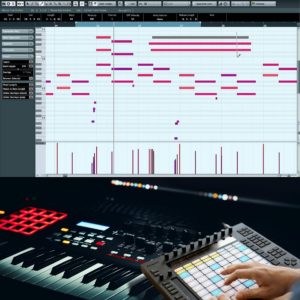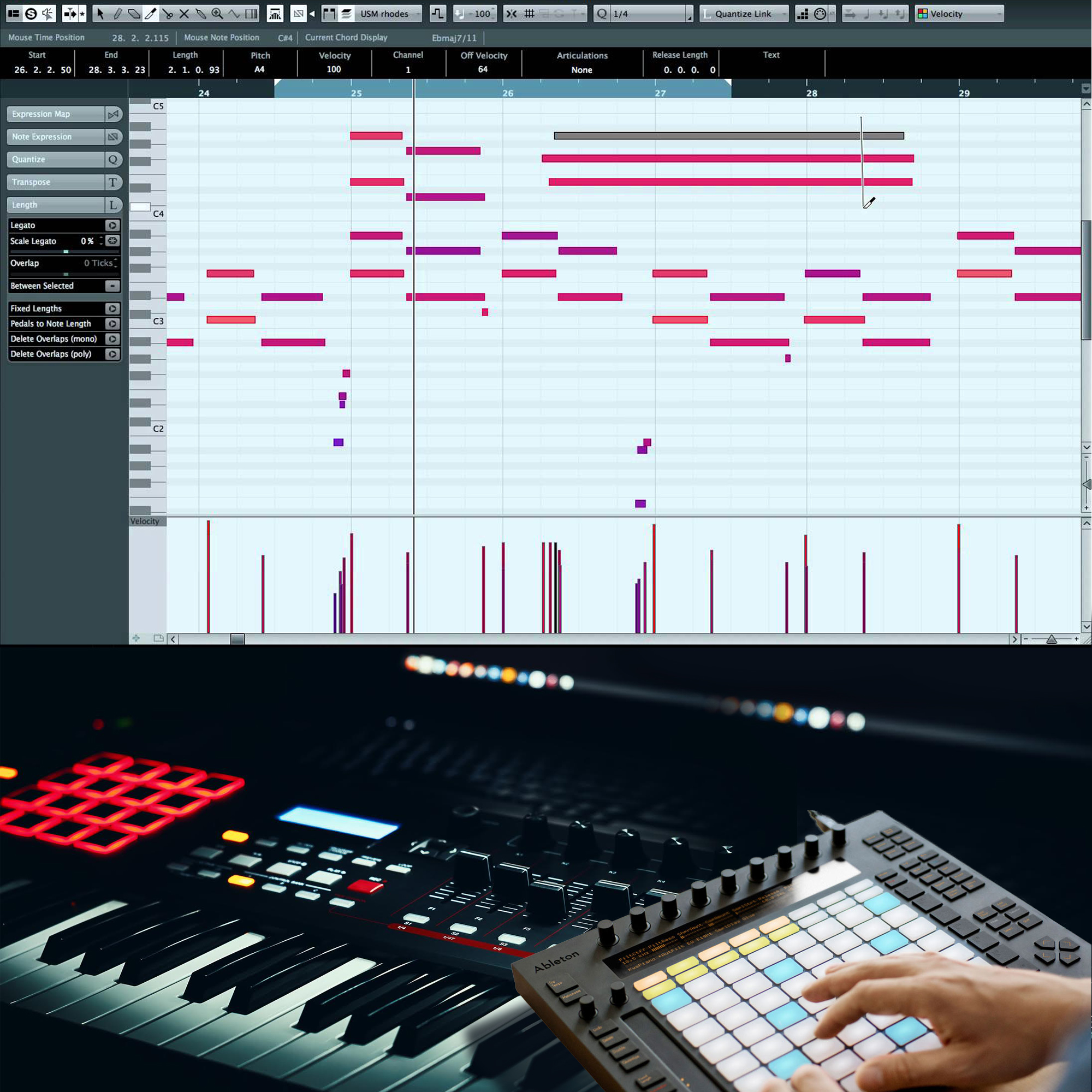The key to an efficient work flow when using midi and virtual instruments, is having a system that does not hinder creativity. It should also be a system that is both inspiring and easily modifiable, as technology is always rapidly advancing. Here’s a few tips that will boost your virtual agility in the studio and help you make the most of your productions:
- MOVE FAST
The most prolific artists make very quick decisions in the studio. Try not to labour over specific sounds and decide on something that matches what you hear in your head early in the production. Spending 6 hours deliberating over 122 different combinations of saw bass will quickly render any inspiration redundant!
- RENDER
Speaking of rendering, once you have recorded your midi, bounce a WAV and disable the virtual instrument in your DAW to save CPU processing memory. It’s advisable to save the midi file in case you want to make changes later, however you needn’t keep the virtual instrument active unnecessarily. Most DAWs now have an option for rendering in place which quickly creates an audio track of the recorded midi. Happy days!
- LAYERING
So you’ve come up with this amazing arp synth progression. Here’s an idea, duplicate the track and assign it to a different VI (virtual instrument) and watch the layering appear before your eyes (and ears!). This is a superb way to add texture and interest to singular midi tracks, EDM producers often use this method.
- USE PRESETS FOR INSPIRATION
Presets are often frowned upon for various reasons, however they are a legitimate tool to fast tracking your knowledge of what your software is capable of. Use existing presets for inspiration, you can always modify the preset and save a custom version of your own.
- LEARN YOUR TOOLS
This ties in with the point above. Once you have a decent understanding of the capabilities of your chosen VI, you can then start genuinely building your own library of custom sounds which will seriously speed up your workflow in time.
- STAY UPDATED, BUT BE PREPARED FOR SPEED BUMPS
Software updates are the bane of the modern music producer. Updating software means you will eventually need to update your hardware, otherwise you will eventually be faced with the dreaded latency issues and software glitches that come with a tired system. Staying up to date can be a significant cost over time, so it’s important to plan systematically what you want to update and how you plan to implement it. Most importantly, it’s great to have a system that actually works, so tread carefully!
- PROJECT TEMPLATES
It’s a great idea to setup templates in your DAW for each stage of the production process. Keep your midi projects lean and mean by only using them for crafting your productions and writing material. Have some of your favourite VI’s pre-loaded into the template so you can get moving quickly with a new project. Separating template types will remove the temptation to mix or master during the recording/production stage and keep you focused on the task at hand!
Until next time,
Mike






